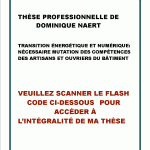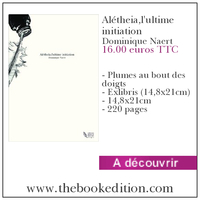Chercher
Catégories
- Actualités
- Forum
- Histoire
- L'Homme
- La pédagogie de l’éthique
- Le Labyrinthe
- Les Compagnons légendes et histoire
- Non classé
- POESIE
KEEPING THE FLAME OF CRAFTSMANSHIP ALIVE
How the fame on the Statue of Liberty is related to a French Center in Troyes, France, that celebrates ancient manual skills.
Few artisans can match the accomplishments of Serge Pascal, master repousseur. At 64, he has completely rebuilt major parts of two national monuments located an ocean apart and separated from each other by centuries of purpose and concept. Yet both works of art were done using many of the same basic hand tools and techniques passed down over centuries.
Repoussage, for which there is no easy English equivalent, involves hammering on a sheet of metal over a curved anvil to create relief. The various concave and convex bulges may be shaped to resemble a flame or plants and flowers or even a crown.
Serge Pascal, and his team restored the torch of the Statue of Liberty and gave it a new flame. (Nov. 1985) Photo: Amer. Soc. Civil Eng.)
Pascal and his fellow workers spent two years rebuilding the flame of the Statue of Liberty. It was completed in time for the statue’s rededication on July 4, 1986. After returning to France, Pascal eventually became director of a new institution that is now unique in the world, the Maison de l’Outil et de la Pensée Ouvrière (The Center for Tools and Craft Philosophy). He remained its director for 11 years.
Subsequently, Pascal has worked for a private firm, the Ateliers St. Jacques, which made use of his skills to replace the main gateways to the Palace of Versailles. The originals were destroyed during the French revolution.
A complex work of repoussage is this ornate cap on a main gateway to the Palace of Versailles. (Photo courtesy of S. Pascal)
Repoussage, Pascal’s particular skill, is one of the 48 trades represented in the Maison de l’Outil, a half-timbered Renaissance building hidden away on a narrow cobblestone street in the medieval city of Troyes. The Maison includes a stunning showcase of hand tools. These are the type of tools skilled craftsmen used to construct the hundreds of churches, cathedrals, chateaux and splendid public buildings that help fill the architectural treasure chest of France. All is housed in the 16th Century Hôtel Mauroy, a half-timbered building whose walls are a harmonious blend of red brick and exposed dark oak framing. »
Figure 3: The Hôtel Mauroy, home to the Maison de l’Outil (photo by author)
The Medieval Building Boom and the Specialization of Labor
Of the collection of some 10,000 hand tools, 8,000 are on display in 60 elegant glass enclosures. They represent 48 different trades. Most of the tools on display are from the 18th and 19th Centuries. But many have changed little since the medieval period during which France’s great gothic cathedrals were built.
Between 1150 and 1250, France experienced an explosive growth in construction. Two hundred and fifty cathedrals and large churches were built, including the cathedrals of Paris, Reims,, Amiens, Sens, Rouen and Troyes. Another 35,000 smaller churches and chapels were built or reconstructed in the same period.
Some individual buildings required over 300 craftsmen at various stages of construction. Others used fewer workers but were completed slowly. The Cathedral of Troyes took 350 years to complete.
Dominique Naert, president of « The Friends of Paul Feller », an association closely linked to the Maison, advanced the following approximate numbers of craftsmen and tradesmen required during the late Middle Ages (1100-1350):
- 250,000 masons, stone cutters, draftsmen, painters, glass blowers, and leaded glass window artists.
- 40,000 roofers
- 100,000 framers and carpenters
- 170,000 blacksmiths and farriers
- 150,000 wheelwrights and cart and wagon builders.
Naert points out that many other workers were indirectly involved. These were farmers, woodsmen, coke oven operators, and the makers of wooden shoes, harnesses and saddles, horse collars and barrels as well as the men who built roads, streets and bridges. He estimates that out of a population of about 20 million, some six or seven million were professional craftsmen.
Children became apprentices from the age of 12, providing additional labor. Various religious orders took in young boys at 15 years of age. Many of these became apprentices to craftsmen who were engaged in expanding monasteries or building churches.
Almost everyone in this huge work force used hand tools. Many of the craftsmen made or designed their own and had them hammered out by the local blacksmith. There was also considerable interchange of ideas and tool design between craftsmen. The chapter of any given cathedral would frequently run out of funds and stop work. Many of the workers in its building crews would then decamp to another building site to continue their trade. They took their ideas and tools with them.
Master masons were in particular demand as they frequently served as architects. In his classic book, « Building Troyes Cathedral », Stephen Murray describes the lot of the Master Mason, Martin Chambiges. He was the master mason of Beauvais Cathedral but was often called to Troyes to solve certain construction problems. Almost as soon as he left, he would be called back. He also was involved in the construction of cathedrals at Sens and Senlis. Over several years, he traveled back and forth from Troyes to Beauvais on horseback, a distance of 185 km requiring five days. He acted as the medieval equivalent of a modern consultant.
Masons and cutters were frequently in short supply since many contracted respiratory diseases from the constant exposure to stone dust.
The Tool Collections
The most prominent of the Maison’s exhibits are those dedicated to the blacksmith. The massive anvil that is used as a logo for the Center is displayed with a battery of tools used in the forging and shaping of iron. Hammers, tongs, anvils, anvil hardies, chisels, files, rasps and vises are displayed as well as fire pans and bellows.
Figure 4: A display of blacksmith tools (photo by author)
Tools are frequently arranged as they were used, so the visitor can easily imagine how they were employed. The workshops of barrel makers (tonneliers) are jewels of museum exhibition art. This manner of exhibition is repeated for the wheelwrights and cartwrights (charrons). In the exhibit of vannerie, or cane basket making, a half-finished basket with small wooden dividers on the end of each cane helps you to envision how the universal basket was made.
Figure 1: Half-made basket with clips to separate split canes (photo by author)
We learn from a side panel accompanying the leather-tanning exhibit that the father of Louis Pasteur was a tanner. Son Louis later became famous for his development of the rabies vaccine and particularly pasteurization. It is likely that Louis helped his father to tan hides well before the latter discovered his son had other talents.
Photographs depicting artisans at work during the 19th century accompany some displays. Thus we learn that a woman, Juliette Caron, became a master charpentier (building framer) in 1882. She helped build the casernes (military barracks) in Montluçon. Another photo shows barrel makers standing beside examples of their work at the entrance to a small workshop in the Bordeaux region.
Hand tools are suspended in the exhibits by slender stainless-steel wires or rods from the ceiling of the enclosure. Thus hung, they remain fixed in space, with the same attitude as envisioned by the display artist. There is, however, a clearly standardized method that gives a harmony to the whole. When you move from one display to the next, you begin to know what to look for and how to look for it.
Frequently, the glass of the enclosure carries a transparent label with a philosophical dictum of Paul Feller, the spiritual and material founder of the collections. On the blacksmith’s exhibit appears: « When I forge, I create myself. » On the collection of hammers, one may read, « Passive while also active, the hammer informs me as, through it, I transform. »
At seven locations, TV screens show videos about a particular craft. In one, blacksmiths are shown forging two pieces of iron together, then hammering the finished piece, still glowing hot, into a desired shape. The videos are in French, but they are easy to follow. And though all texts in the Center are also in French, audio guides in English are available to help explain the various exhibits.
Of particular interest is the finish on the tools. They have a shiny patina that reveals the marks of hand-forging and considerable use. A protective coating of oil makes them appear much as they might have looked when they left the forge.
Discreet, yet easily read, numbers are attached to the items. They refer to a list printed on another clear label affixed to the front of the enclosure. The visitor can read the label and see through the enclosure simultaneously.
Two magnificent staircases, one spiral, enable visitors to access the second and third floors where the major exhibits are located. Both were built by local artisans. Each is a marvel of precision carpentry and artistic finish. Alternatively, visitors can use a small elevator.
Since its opening in 1974, the Maison has received over 176,000 visitors. Most of them come from France, of course, but there is a goodly number from Holland and Germany. The preponderance of Dutch and German visitors may be due to the location of Troyes astride the main route from the center of the Champagne district to the ski centers of the French Alps as well as to the Côte d’Azur.
Paul Feller and the Compagnons du Devoir
In 1958, Paul Feller, a Jesuit priest who had trained to become a professional blacksmith, became a dedicated collector of antique tools. He later donated his extensive collection to an association called the Compagnons du Devoir (the Brotherhood of Duty). This association was given responsibility for completely renovating the decrepit Hôtel Mauroy. For this job, the Compagnons provided all the artisans. The tool collection continues to grow with gifts from interested donors.
Paul Feller became the inspiration for the Maison. Such was his interest in tools and craftsmanship that he wrote, with Fernand Tourret , a monumental book called L’Outil, (Tools). In this 300-page exquisitely illustrated work, the authors describe the origin of many common tools with interesting observations on how they changed to meet changing conditions. As the Gies explained in their excellent book, « Cathedral, Forge and Water Wheel, » the « dark ages » were not totally dark.
The Brotherhood of Duty administers the Center, which includes a library with 35,000 titles concerning every aspect of tools. It also has meeting rooms for symposiums and special events. The Brotherhood is type of craft guild. It was legally established in 1419 in Troyes by an edict of King Charles VI in an attempt to organize the city’s cobblers. It soon grew to include members of several trades. The masons had their own guild complete with initiation rites in which an apprentice, having proven himself, was admitted into the guild. In this respect, the Brotherhood resembles the Masonic Lodges of today.
A member of the Brotherhood of Duty is expected not only to be a master craftsman, but also to train apprentices. Hence « duty ». The present director of the Maison, Monsieur Yannick Patient, is a Compagnon cabinet maker. One of the main goals of the institution, he told me, is to encourage an interest among France’s youth in working with hand tools. He hopes that the association’s activities will help close the gap in understanding between intellectuals and tradesmen and their apprentices. Among these activities are symposiums, training sessions and the promotion of apprenticeships.
The City of Troyes – relevant history and the Talmudic connection -
Troyes is located at the conjuncture of the Champagne and Burgundy regions. It can be reached in 1.5 hours by frequent train service from the Gare de l’Est in Paris. The city was an important transport hub dating back to Roman times. In the Middle Ages, it hosted one of the great fairs of the Champagne region. These attracted merchants from as far away as Spain and Italy. Abundant running water aided the establishment of tanneries, cloth dyeing and paper manufacture. Eventually, Troyes became a center of hosiery manufacture. At one time the Hôtel Mauroy housed looms for hosiery weaving. In the 13th Century, an association of Master Glaziers raised the art of stained glass windows to new heights, literally and figuratively. Troyes was becoming a center of building arts and craftsmanship as well as a great commercial entity. Elegant mansions and homes abound, even today. The town sits on a wide curve in the Seine, which is navigable at that point.
The English achieved dominance of the city and region in 1240 when King Charles VI of France promised his kingdom to his future son-in-law, Henry V of England. The bait was his daughter, Catherine. All was agreed to in the Treaty of Troyes, just in time for a June wedding.
Troyes was also home to the great Jewish scholar, Rashi, born there in 1040. He founded a school of Talmudic studies, renowned throughout much of Europe. Rashi died in 1105. A modern monument to his memory is in the public square before the Théâtre de Champagne. Troyes maintained a lively Jewish colony during much of its history. The city’s commercial importance was such that it established its own system of weights based on the Troy pound; hence Troy ounces. This system was used in England for weighing gold and precious stones.
Today the city has refurbished its ancient center. The traditional half-timber and adobe brick style (colombage) is prevalent.
Figure 5: A half-timbered medieval house with a satellite dish (photo by author)
Many of the town’s hotels are within walking distance of the train station. Restaurants are numerous and reasonably priced. The central market is an artistic feast. Butchers, pastry chefs, delicatessens, fish and seafood merchants, cheese vendors, fruit and vegetable sellers compete to organize their produce and products into a cornucopia of gastronomic temptations. The most colorful stall is operated by Pascal Caffet, Master Pâtissier, who received the coveted prize of « Best Worker of France » in 1995.
Figure 6: A sample of luscious cakes by Pascal Caffet (Photo by author)
A specialty of Troyes that is known throughout France is one that would make most Americans hesitate. Chitterling sausage (Andouillette de Troyes) is a mixture of cleaned pork intestines and lean scrap meat from a pig’s head, plus trimmings from the cutting table. This mixture is stuffed tightly into a large pork intestine. It is best served grilled with golden pommes frites and a good red Burgundy.
Window of the locksmith to the « Maison de l’Outil et de la pensée Ouvrière » in the city of Troyes in France
The nouns « serrurerie » (lock-smithing) and « serrure » (lock) derive from the verb « serrer » which, in old French, meant to close or to keep safe. In every historic period, locksmiths have focused more on making a variety of large works in iron, such as fences, gateways, doors, banisters, balconies and railings. All these works serve to « keep safe », that is to enclose, to shelter a building or an object from ignorant or malevolent people. In effect, the locksmith does much more enclosing than lock-making.
This window illustrates the technique of « repoussage, » a French word used also in English, that denotes hammering out a soft metal into a convex shape or relief. The « repousseur » hammers a sheet of metal very fine. Starting with a flat sheet of soft metal, and without applying heat, he forms the cold metal into a relief. Repoussage is especially valued for creating foliage to ornament iron gates, recalling the symbolism of the original Garden of Eden. It was mostly developed from the 17th century on. The leaf shapes, often gilded subsequently, were cut from fine sheet metal than hammered into relief on an anvil or mold.
The « repousseur » uses several hammers, each slightly different. each with a special purpose; the chisels and scissors are used to trim the foliage prior to treatment and gilding. France’s leading locksmiths used this leaf decoration. The most famous of these was Jean l’Amour,who created the iron gate and railings at the Place Stanislas in Nancy. The most talented « repousseurs » of the 17th century worked at Versailles, creating sumptuous balconies and railings. This window contains a sample of foliage work from the restored iron gate of the Place Stanislas in Nancy, as well as a sample from the reconstructed flame of the Statue of Liberty in New York (restored in 1985 in time for the 1986 centennial of the statue). Each of these samples illustrates the talent of French repousseur Serge Pascal. Pascal was also the principal artisan of the royal gate and railing of the Palace of Versailles. This work was recreated in 2009 under the patronage of the French Historic Monuments Commission. These samples prove that skill outlasts time and modernity. Tradition and progress combine in the gesture of the locksmith, dedicated to transcending time….


